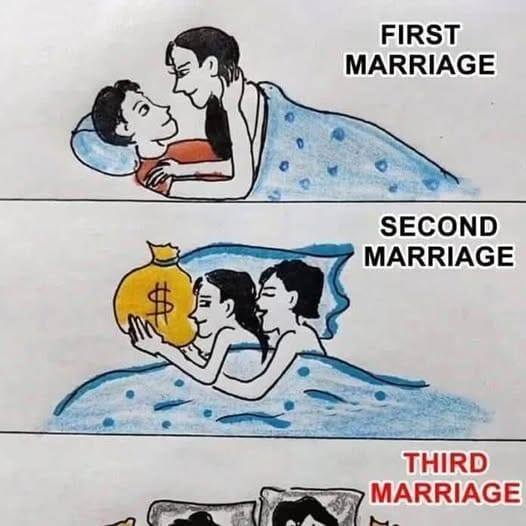Marriage: A Journey of Growth and Change
Marriage is often referred to as one of life’s greatest adventures. This enduring partnership, based on love, trust, and commitment, evolves over time, shaped by the experiences and challenges each partner faces together. What makes marriage so unique is that it doesn’t stand still; it’s a journey that transforms with every passing year, every new challenge, and every triumph. The differences between a first, second, or even a third marriage aren’t just about the people involved, but also about how each partner has changed along the way. These variations often reflect shifts in life experiences, priorities, and personal growth, which can dramatically impact the way a marriage is lived and the kind of partnership it fosters.
In a first marriage, both partners are typically discovering what it means to commit to one another. It’s a time of learning—about each other, about themselves, and about the realities of long-term partnership. The early years are often filled with optimism, dreams, and a sense of adventure. It’s a time when couples are forging their identities as a unit, building the foundation for what will hopefully become a lifelong commitment. However, this stage can also be challenging as individuals adjust to the realities of living together, handling finances, and navigating the changes that come with merging two lives into one. First marriages are often marked by a sense of trial and error as couples figure out how to communicate effectively, resolve conflicts, and build a life together.
By the time someone enters a second marriage, they are often not the same person they were in their first. Personal growth, past mistakes, and lessons learned play a big role in shaping this second chance at love. In a second marriage, people tend to be more self-aware, and many have a clearer understanding of what they want and don’t want in a partner. There may be a deeper level of emotional maturity, as individuals learn from their past experiences and bring a new perspective to the relationship. The challenges of the first marriage, including navigating the complexities of divorce or the end of a previous partnership, often provide a better framework for communication and mutual understanding in the second marriage. However, while this marriage may feel more grounded, there are still obstacles to overcome—particularly when blending families or adjusting to the scars left by a previous relationship.
A third marriage, which many view as a unique chapter, often reflects a person’s most evolved sense of self. By this point, the individual has gained wisdom from past relationships and has a clear understanding of what works and what doesn’t. A third marriage often involves people who have gone through significant personal growth and may have become more independent, self-assured, and open to compromise. The expectations tend to be more realistic as both partners understand the ups and downs of married life. There is often less pressure to make the relationship “perfect” and a greater appreciation for the small joys that come with partnership. However, the challenges are still present—there may be concerns about finances, retirement plans, and blending even more complex family dynamics.
In all types of marriages, the key to making the relationship work is mutual respect, love, and a willingness to grow together. Each marriage brings its own unique set of challenges, but it also provides opportunities for personal growth, self-discovery, and deeper connection. As individuals evolve, so too does the relationship. And while no two marriages are the same, each one can teach valuable lessons about love, commitment, and what it truly means to share your life with someone else.

